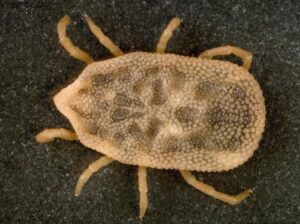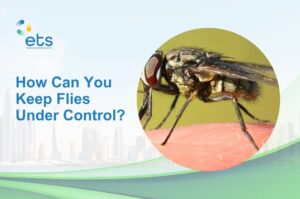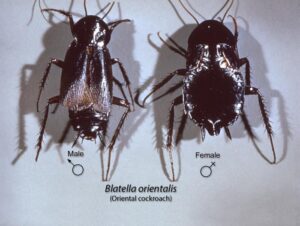Blow Flies:
General Description
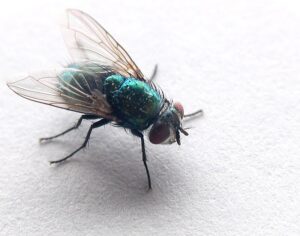
Blue Fly Credit: John Talbol |
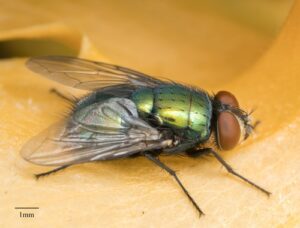
Green fly Credit: glmory – inaturalist.org |
- Adults of blow flies are about the size of house flies or slightly larger and have a bright metallic blue or green coloration.
- The mouth parts are sucking type.
- The veining of the wings is similar to that of the house flies.
- The adult blue fly, Calliphora, is slightly larger than the house fly, with a bright blue color on the abdomen and dull on the thorax.
- The green fly, Lucilia, is about the size of a house fly or slightly larger, bluish-green, or yellowish in color.
- The striped green flies. Chrysomyia, are about the size of the house flies or slightly larger. It is a bright emerald green color that may be tinged with bluish or yellow.
Life Cycle and Common Characteristics
- These flies deposit eggs upon animal carcasses and meat products causing them to “bottle” or be “blown” with
- They are common in most urban areas and are often abundant in garbage dumps, slaughterhouses, and meat processing
- They have long flight ranges and a strong sense of smell which guides them to dead animals and other attractants, even when located in distant
- Eggs may be deposited on living animals, although clean, healthy animals are rarely
- The larvae, upon emerging from the eggs, feed for a short time upon the surface of the food near the egg mass, when fully developed, they leave the breeding area and burrow into the
- The puparium is formed within a few days and emergence happens from 10 to 12 days after
- The life cycle of blow flies typically takes 3 – 4 weeks depending on the species
Damages and Medical Implications
- The blue flies, Calliphora, prefer to breed in garbage inside gardens, desert lands, and homes. Adult insects are attracted to rotting flesh, feces, and fruit stalks.
- The green flies, Lucilia sericata, are common flies in various environments found in slaughterhouses, markets, and garbage heaps. Adults are attracted to dead carcasses, open wounds, sheep’s fur, and to a lesser extent, fecal waste, where the larvae develop. And cause a rattle in sheep in some areas.
- The green flies, Lucilia cuprina, feed on fallen fruits and on nectar and honeydew secreted by aphids. The female needs a meal of protein for the eggs to mature, and this can be provided by feeding on the feces of sheep and other animals, or on dead bodies.
- The striped green flies. Chrysomyia, are widely spread and are found in slaughterhouses, markets, garbage heaps, and inside dwellings. They are disturbing insects in homes, markets, and restaurants, and they cause many problems for animals and humans.
- Blow flies serve as mechanical vectors of disease organisms in the same way as house flies.
- Adults attracted to decaying flesh, carrion & Other species belonging to the genera Calliphora, Chrysomyia & Lucilia are involved in myiasis (the infestation of a live mammal typically from an infected sore).
- Not normally involved with diseases, but may spread bacteria (e.g. anthrax).
- Blow flies are a key component in forensic entomology (murder cases) and wound treatment in wartime.


